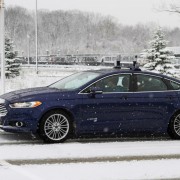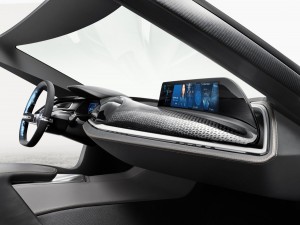Testing Driverless Cars in Snowy Winter Weather - Check!
Jennifer van der Kleut
It’s an announcement industry followers have been waiting for.
Finally, a company that is heavily invested in autonomous and connected-car technology is putting it to the test in extreme weather.
Ford Motor Co., together with the University of Michigan, announced this week that the partners have been testing the technology in snowy, icy winter weather over the past month, and will continue.
As Forbes points out, one of the factors that makes Michigan an ideal location for testing autonomous cars is the widely varying weather from season to season-that and, of course, the fact that the University has Mcity, its 32-acre testing ground with a fake cityscape, built specifically for testing autonomous and connected-car technology.
One burning question that industry professionals have long been asking is how well autonomous car technology would fare in extreme weather when rain, snow or ice might obstruct cameras and sensors. As WIRED puts it, “Radar and LIDAR do most of the work looking for other cars, pedestrians, and other obstacles, while cameras typically read street signs and lane markers.”
If those systems are obstructed, one could find himself in a dangerous situation. This is why many are eager to hear how Ford’s tests are going.
Jim McBride, Ford’s head of autonomous research, told WIRED that Ford creates a high-fidelity, 3D map of the area its test car is going to travel before a test drive. This form of “self-locating” helps its cars compensate in inclement weather conditions.
According to McBride, “Those maps include details like the exact position of the curbs and lane lines, trees and signs, along with local speed limits and other relevant rules. The more a car knows about an area, the more it can focus its sensors and computing power on detecting temporary obstacles—like people and other vehicles—in real time.”
News like this sheds light on why high-profile deals and partnerships with mapping and navigation companies like TomTom and Nokia’s HERE are such big business right now, and why industry analysts think Google’s acquisition of traffic tracking app Waze a few years ago will prove to be a big boon in the driverless race.
All in all, McBride told WIRED he is very confident Ford’s tests in snow and ice will go well.
“We’re able to drive perfectly well in snow,” he said.


 l as the noticeable lack of certain expected features:
l as the noticeable lack of certain expected features: